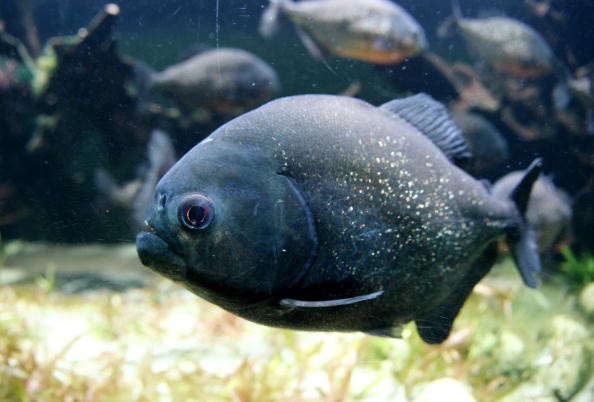The reputation of piranhas precedes them. These feisty South American fish are infamous for their sharp teeth, fierce demeanor, and great appetites, which allegedly can force a group of piranhas to skeletonize a cow in few minutes.
Yet while they are a powerful force in their native waterways, piranhas are also far more assorted - and less dangerous to humans and cattle - than usually believed.
In hopes of clarifying some notion on these misunderstood fish, here are a few fascinating and lesser-known facts about piranhas.

1. Piranhas Pose Little Danger to Human
Piranha attacks on humans are uncommon, and when they do happen, usually involve one or just a few bites to the hands or feet by one fish, causing injuries that are excruciating but not life-threatening. There are very few recorded cases of piranhas consuming a human, and not less than three of those involved people who had already lost their lives from drowning or other causes.
2. They Are Unexpectedly Diverse
Piranhas belong to the taxonomic family Serrasalmidae, together with related fish referred to as pacu and silver dollars. There is no certain consensus about the number of piranha species in existence today, because of challenges in identifying species, linking their youngs with grown-ups, and unwinding their evolutionary histories, as researchers wrote in a study released in the journal Zootaxa.
3. We Don't Actually Know When They Evolved
According to the Zootaxa study, Modern piranhas might have evolved in the recent past of about 1.8 million years ago, around the beginning of the Pleistocene Epoch,
Other research made suggestions that the main lineages of piranha diverged from their most recent common ancestor approximately 9 million years ago, during the Miocene Epoch.
4. Some Specialize in Consuming Scales
Fish are a great source of food for many piranhas, but falling victim to a piranha isn't often lethal for their prey. Opportunistic piranhas will improvise with some scales or a fin from the ones that escaped, and some species are specialist scale consumers, having adapted to feed mainly on the scales of other fish.
Scale eating, also referred to as lepidophagy, has independently evolved in not too many fish lineages. It's reportedly more usual among juvenile piranhas, although some species stay focused on scales in adulthood, frequently using specialized hunting strategies.

5. Piranhas Swarm for Protection, Not Hunting
Although piranhas are well-known for their feeding frenzies, in which a large group quickly rips a much bigger animal to species, that doesn't appear to be normal behavior. Their live prey is usually smaller, and they aren't recognized to make their hunt in large groups.
The red-bellied piranha is one species frequently credited with overwhelming massive prey, but while the species does at times travel in groups referred to as shoals, research gives a suggestion that this behavior is less about finding prey than keeping away from their own predators.
Related Article : The Only Fish That Can Survive Deadly Piranha Attack
For more news, updates about piranhas and similar topics don't forget to follow Nature World News!
© 2025 NatureWorldNews.com All rights reserved. Do not reproduce without permission.





